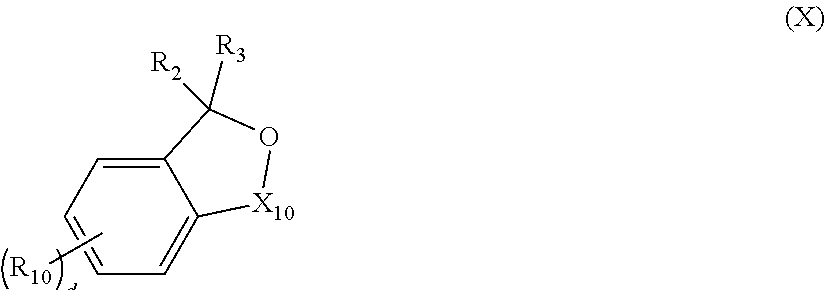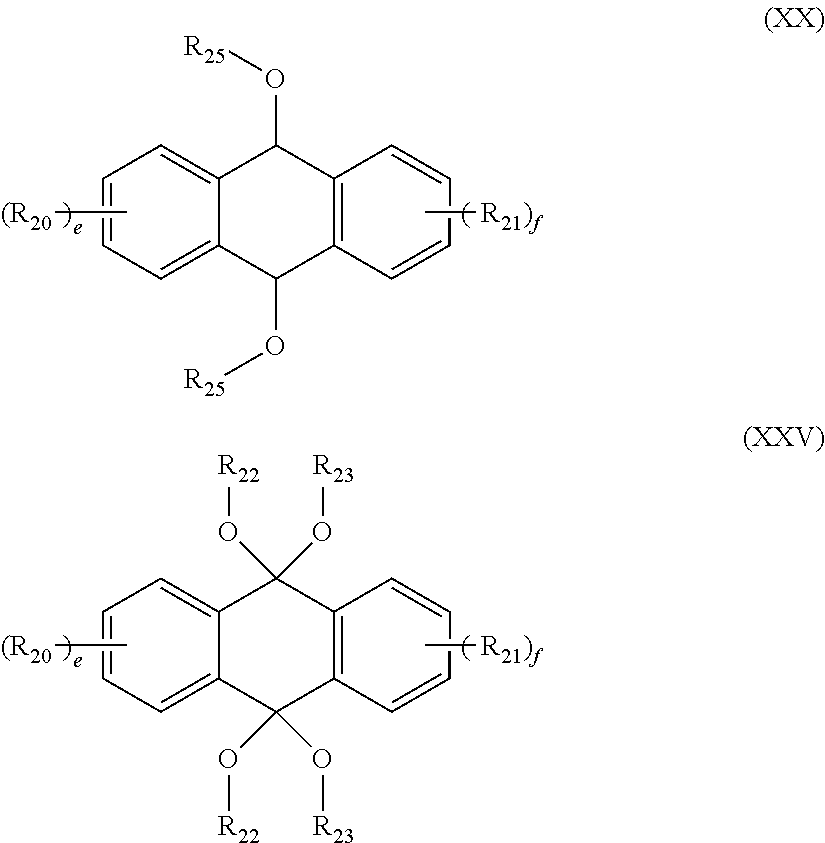Laundry care compositions
a technology of laundry care and compositions, applied in the field of laundry care compositions, can solve the problems of textile articles beginning to deteriorate, deterioration becoming very apparent, and article beginning to develop yellow or dingy appearan
- Summary
- Abstract
- Description
- Claims
- Application Information
AI Technical Summary
Benefits of technology
Problems solved by technology
Method used
Image
Examples
example 1
[0251]This example demonstrates the production of 6-(dimethylamino)-3-[p-(dimethylamino)phenyl]phthalide, which has the following structure:
This compound is a useful intermediate in the production of compounds that are suitable for use in the laundry care compositions described herein.
[0252]First, in a 1 L three-neck flask with a condenser, mechanical stirrer, thermal couple, and a N2 inlet, 74.5 gram of 4-dimethylaminobenzaldehyde, 82.5 gram of 3-dimethylaminobenzoic acid, and 250 mL of acetic anhydride were added and heated to reflux for 6 hours. The mixture was cooled to below 80° C. 45 mL of water was added, and the contents of the flask were stirred for 2 hours. The contents of the flash were then cooled to room temperature, and 250 mL of methanol was added. While the contents of the flask were stirred, a solid formed which was later collected by filtration. The recovered solid product was washed with methanol, and then dried in a vacuum oven at 60° C.
example 2
[0253]This example demonstrates the production of 5-(Dimethylamino)-2-[p-(dimethylamino)benzoyl]benzoic acid, which has the following structure:
This compound is a useful intermediate in the production of compounds that are suitable for use in the laundry care compositions described herein.
[0254]In a 250 mL three-neck flask with a condenser, mechanical stirrer, thermal couple, and N2 inlet, 10 gram of 6-(dimethylamino)-3-[p-(dimethylamino)phenyl]phthalide and 40 mL of 10% NaOH solution were added. The contents of the flask were heated to 90° C. and stirred for about 1 hour until a clear solution was obtained. Then, 10 grams of sodium m-nitrobenzenesulfonate was added to the solution. The contents of the reactor were heated to reflux for 15 hours and then cooled to room temperature. The contents of the flask were filtered to remove any solid. Then, the filtrate was adjusted to a pH of about 4.0 by adding acetic acid. After cooling the contents to room temperature, a precipitate formed...
example 3
[0255]This example demonstrates the production of several compounds that are believed to be suitable for use in the laundry care compositions described herein.
[0256]In order to produce each compound, 40 mmol of 5-(Dimethylamino)-2-[p-(dimethylamino)benzoyl]benzoic acid, 40 mmol of a substituted aniline derivative (described below), and 20 mL of acetic anhydride were added to a 250 mL three-neck flask. The contents of the flask were heated to 100° C. and stirred for 5 hours. The resulting compound was then collected by rotational evaporation.
[0257]The substituted aniline derivative used in the reaction described above conforms to the following general structure:
R5 and R6 are selected from the various groups described above. Table 1 shows the structures of specific substituted aniline derivatives used to produce compounds using the synthetic process described above. Table 2 shows the structure of the resulting phtalide compound.
TABLE 1Structures of substituted aniline derivatives used...
PUM
 Login to View More
Login to View More Abstract
Description
Claims
Application Information
 Login to View More
Login to View More - R&D
- Intellectual Property
- Life Sciences
- Materials
- Tech Scout
- Unparalleled Data Quality
- Higher Quality Content
- 60% Fewer Hallucinations
Browse by: Latest US Patents, China's latest patents, Technical Efficacy Thesaurus, Application Domain, Technology Topic, Popular Technical Reports.
© 2025 PatSnap. All rights reserved.Legal|Privacy policy|Modern Slavery Act Transparency Statement|Sitemap|About US| Contact US: help@patsnap.com



